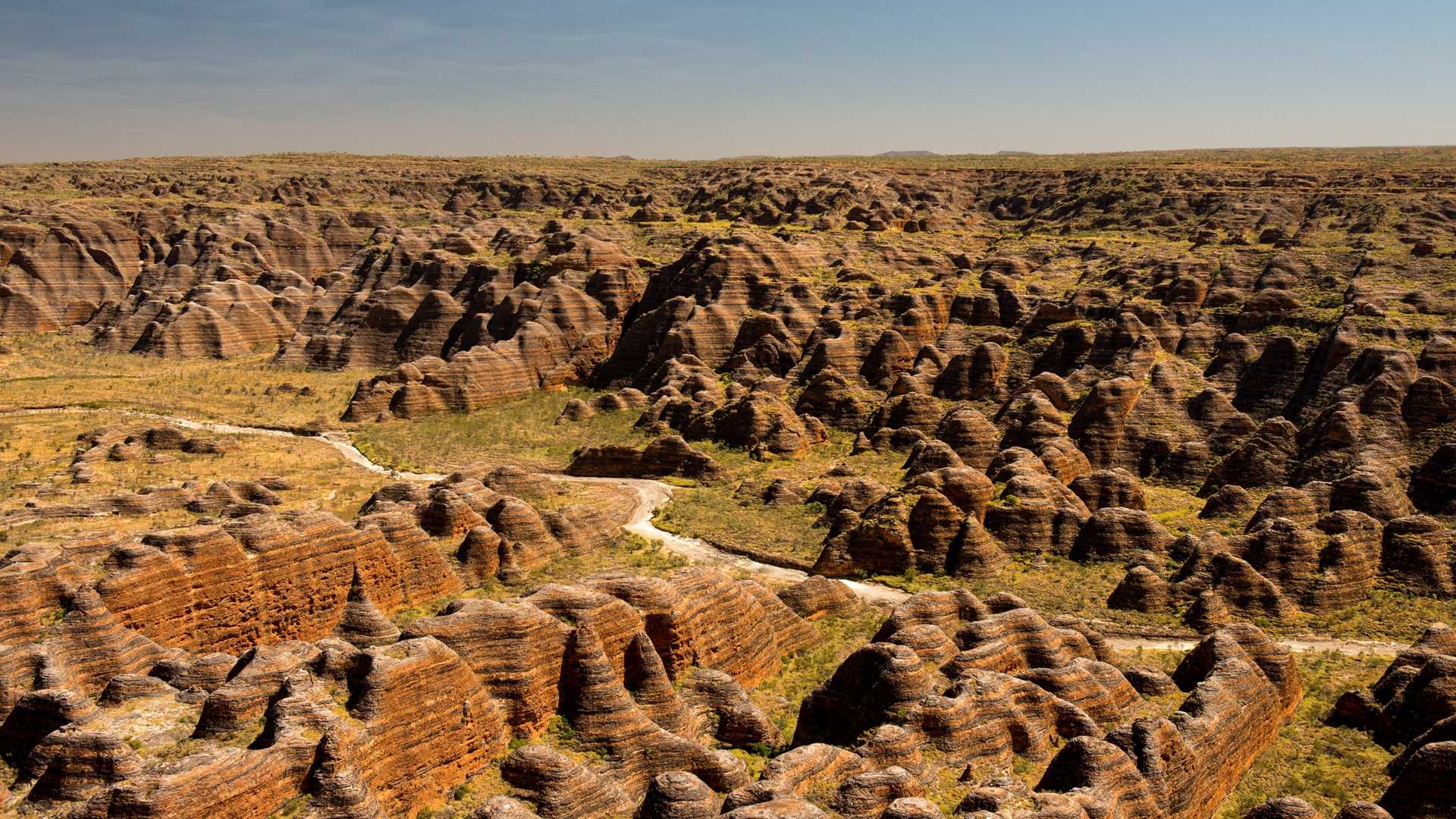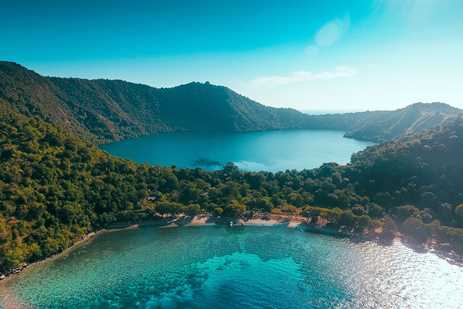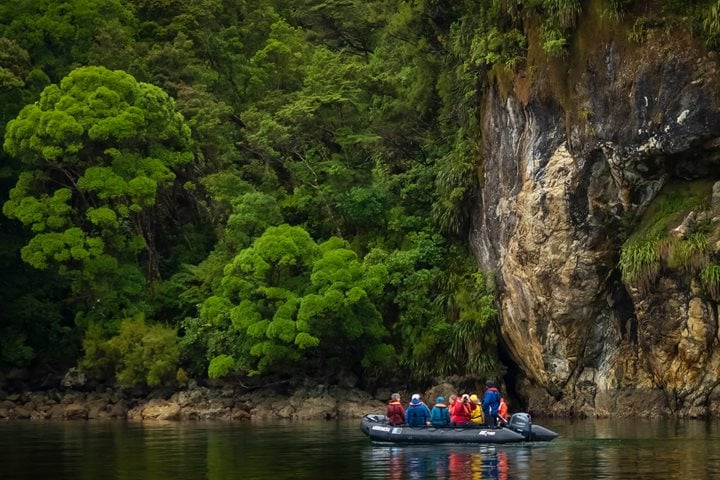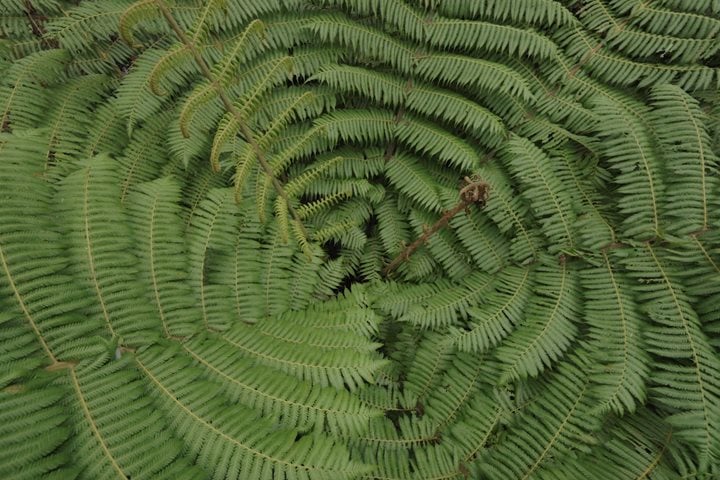Thousands of giant orange-and-black striped rock cones create the stunningly dramatic landscape of Australia’s Bungle Bungle Range. Resembling enormous beehives, these unique sculpted sandstone karsts vary in height, with the tallest soaring 75 stories towards the blue desert sky. Hiding within this fascinating landmark there are deep gorges, narrow chasms, palm trees, seasonal waterfalls, surprising biodiversity, and even a meteorite crater.
Get Inspired By Photos, Videos, Webinars, Stories, And Exclusive Offers.
Sign Up
Where Are the Bungle Bungles?
The Bungle Bungle Range is located in the Kimberley region of Western Australia, in the remote northwest section of this vast continent. Largely inaccessible, the range is a 13-and-a-half hour drive south of Darwin and a 33-hour drive north from Perth. These amazing rock formations sit in the 600,000 acre Purnululu National Park, surrounded by hundreds of square miles of desert. From the park entrance, it's a three hour ride to the range via Spring Creek Track which is only accessible during the April-November dry season and in a 4WD high-clearance vehicle due to creek crossings and other challenges.
Guests can experience the Bungle Bungle range from above via an optional scenic flight on two new Lindblad voyages, Kimberley Expedition: Australia's Wild Northwest and Kimberley Expedition: Northwest Australia and Indonesia.
What Formed the Bungle Bungle Range?
The Bungle Bungles formed over millions of years from sand and gravel that was compressed by sediment, raised by the collision of tectonic plates, and sculpted by wind, rain, and moving water. The original sand lined a bay of the long-dispersed Paleo-Tethys Ocean approximately 360 million years ago, and natural forces began sculpting the domes 20 million years ago. The orange-red bands are colored by iron and manganese, while the grey-black stripes are a cyanobacterial crust—ancient living organisms that help the sand keep its shape.
Read on to discover more reasons why the Bungle Bungle Range is so special.
It Is Unique in All the World
In its inscription, UNESCO described the Bungle Bungles as “unrivaled in their scale, extent, grandeur and diversity of form anywhere in the world.” The range's beehive shapes are visually compelling while their naturally occurring stripes add to their uniqueness and are found nowhere else on the planet to this extent. Climate, geology, erosion, and biological life forms all played a part in building the most exceptional example of sandstone cone karst anywhere in the world, in formations that reflect the major stages of the earth’s evolutionary history.
They Were Only “Discovered” in 1983
Because of its isolated location, the Bungle Bungles were known only to Aboriginal people and to area cattle ranchers before the 1980s. A muster pilot tipped off a film crew about the unusual geological feature. The crew was in the region to produce a documentary about the Kimberleys, and when they flew over the range their film, the Wonders of Western Australia, took a new focus. Their documentary created so much global interest in the range that it was protected as part of a new national park in 1987 before becoming a UNESCO World Heritage site in 2003.
They Have Amazing Chasms and Gorges
As if the otherworldly shapes and colors of the Bungle Bungles weren’t awe-inspiring enough, long narrow chasms and gorges are hidden throughout the range. Cathedral Gorge dwarfs lucky visitors who make the trek in an acoustically sensitive “amphitheater” while Piccaninny Gorge has five “fingers,” all of which lead to different features like a sandy ravine lined with palm trees or a cave often filled with water. At the northern end of the range, Echidna Cavern’s towering 600-foot rock walls have an opening just large enough for a person to pass through, and at midday when the sun is directly overhead, its walls turn brilliant shades of orange and red.
The Colored Bands Are Ancient Life Forms
The gray-hued stripes that envelop the Bungle Bungles are composed of one of the earth’s most ancient life forms. Simple in structure yet crucial to both the evolution of life and to the construction of the sandstone karsts, oxygen-producing cyanobacteria cover interlocking grains of sand in biocrusts. There are at least five species of these single cell bacteria in the gray bands, supported by the moisture in the clay—an element not found in the iron-rich orange bands. Not usually more than a fraction of an inch thick, these biocrusts have colonized hundreds of miles of these geologically fascinating cones, protecting them from the wind and rain over millions of years.
Their Stripes Change Colors
A little help from Mother Nature causes the striped bands to change color. While the strength and position of the sun create daily variations in shade and depth of color, more striking changes occur after a rainfall. Dusty ochre orange bands turn a rich red after rain, but the transformation of the gray bands is even more noticeable. When dry, the gray can appear dull and chalky but rain darkens the cyanobacteria biocrusts so that they appear black or shiny deep green in color.
It’s Home to Unexpected Biodiversity
Located in a transitional zone between wet and dry climates, the Bungle Bungles and the surrounding Purnululu National Park can support wide biodiversity. Many of the plants and animals are endemic or at the edge of their range, with the wetter terrain of the park’s gorges and valleys serving as a refuge. Wildlife surveys have not been thorough, so underreporting is expected in the counting of 150 avian species including migratory birds and the endangered grey falcon, 40 native mammal species like the short-eared rock wallaby, 619 plant species, and 81 reptile species such as the endemic Lerista bunglebungle skink whose only known habitat is Cathedral Gorge.
A Meteorite Crater Can Be Seen from Space
On January 15, 2013, an astronaut on an International Space Station mission photographed what scientists believe to be an ancient meteorite impact crater in the central part of the Bungle Bungle Range. It measures nearly four-and-a-half miles in diameter and is clearly visible on satellite images. Called the Piccaninny Circular Structure or Piccaninny Crater, it is thought to have been formed when a meteor collided with the Earth somewhere between 300 and 180 million years ago. Surrounded by the Bungle Bungles’ well-known sandstone cones, the crater forms a roughly circular plateau that has eroded over time.
There Are Hidden Waterfalls and Palm Trees
Elements of traditional oases are found within the deep gorges and chasms of this serpentine and mostly arid range. Palm trees—most notably Livistona fan palms—thrive, and waterfalls cascade down the sides of sheer rock walls. Although the area receives a robust 79 inches of rain each year, it is seasonal and there’s a high rate of evaporation. However, groundwater bubbles up from porous and jointed rock, creating both permanent and seasonal water pools that are critical in supporting flora and fauna.
Aboriginal People Have Lived Here for More Than 20,000 Years
Aboriginal people have been intricately connected to the landscape surrounding the Bungle Bungles for thousands of years. A small number inhabited the plateau for a time, using a notched pole to climb to the top. Traditionally though, they moved through different areas depending on the season, and left behind hundreds of sacred places like burial sites and rock art paintings. Aboriginal people believe that superhuman ancestors created each element of the landscape, giving these natural forms spiritual powers that need to be sustained through rituals. They also can be named for landscape features and that naming creates a strong bond, further linking the people to the land.
It Inspired an Art Movement
The powerful beauty, timelessness, and immense scale of the Bungle Bungles have inspired many painters, but a particular group of Aboriginal artists is recognized internationally. The paintings of the Warmun Turkey Creek art movement are often constructed of large fields of different colors separated by dotted white lines to create a sense of an aerial view; they often depict specific meaningful places, and are painted with ochre—pigments obtained from the earth that their ancestors used in rock paintings.






